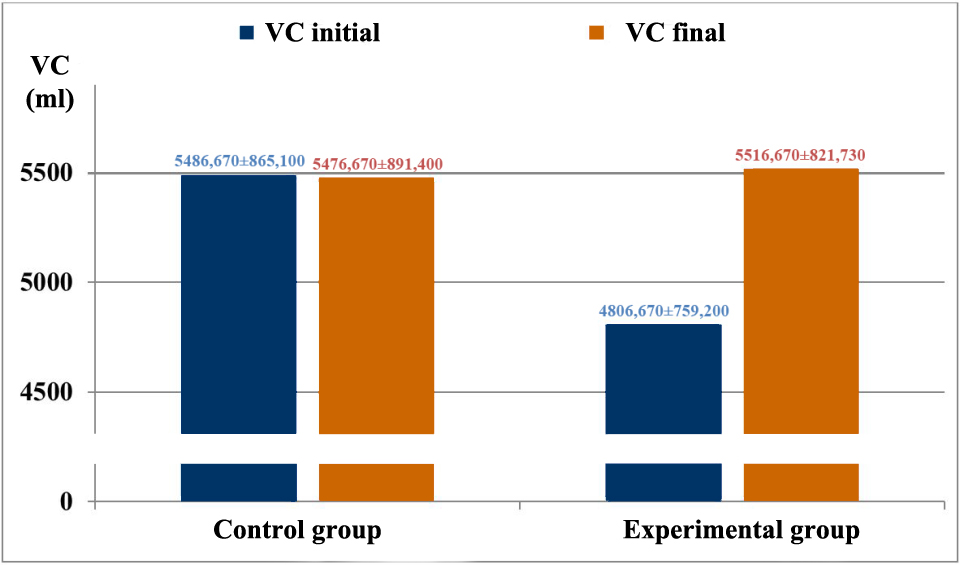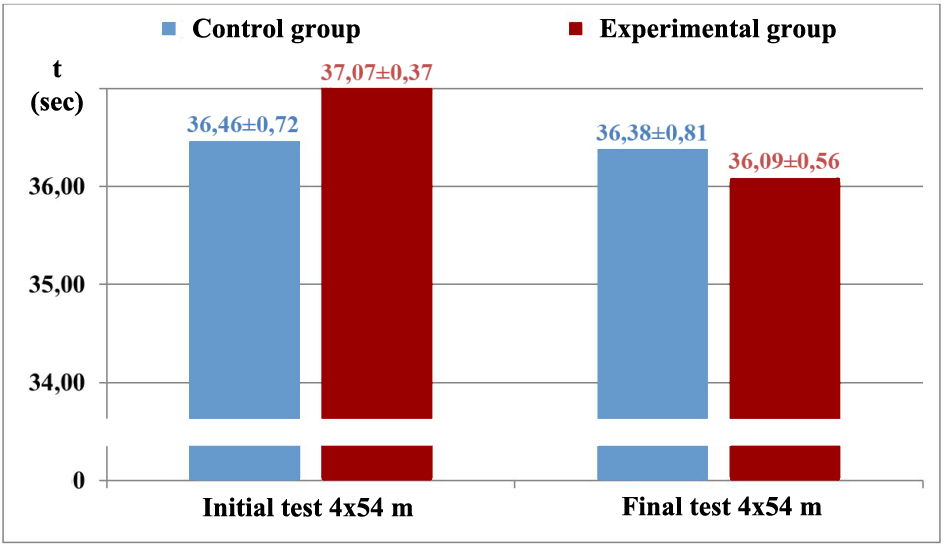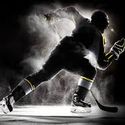Pavlov A. S., lecturer
Petrov A. A., lecturer
Russian State University of Physical Education, Sport, Youth and Tourism
Department of theory and methods of hockey
Introduction. The ability of a hockey player to show (demonstrate) high speed skating during the entire playing time of a game, is one of his most important qualities. Experts say that an athlete’s performance level depends on their level of aerobic capacity of the organism (Y. V. Nikonov, 2003; V. P. Savin et all, 2003). The external respiration system of a human is the defining element of the system of aerobic capacity of the human body. The relationship between the level of the external respiration system and the body’s level of performance has been proven (S. V. Klauchek et al., 2010; L. V. Tarasova et al, 2013). A number of publications indicate the possibility of targeted development of the external respiration (breathing) system and improve its functions. Some of these publications are devoted to the study of the of increasing the physical and special performance of athletes by increasing the efficiency of functions of the external respiration system (V. E. Vinogradov, T. A. Tomyak, 2004; A. S. Mikhailov, 2013; Dylan M. Wiwchar et al., 2010).
Hypothesis. It was assumed that the rise of one of the main indicators of the respiratory system (vital lung capacity – VC) of qualified hockey players should justify the increase of speed endurance in skating on the principle of «cross–adaptation.»
Research objectives:
1. To prove the effectiveness of the impact of focused work (using a system of breathing exercises) with the goal of improving the individual performance of the respiratory system of skilled players in the age group 16–19 years old.
2. Rate the dynamics of speed endurance in skating of skilled hockey players in the age group of 16–19 years old during the preparatory period of a one-year training cycle, during the training process special breathing exercises were used for improving the respiratory system of players.
Organization and research methods. A scientific experiment was carried out, including: the assessment of the dynamics of vital lung capacity (VC) of players in the experimental and control groups during the preparatory period of a one year training cycle; implementation of a complex of breathing exercises (using A. V. Sidersky method) for hockey players in the core group; evaluation of speed endurance test results of players in both control and experimental groups at the beginning and at the end of the pedagogical experiment. To evaluate the players speed endurance in skating, we used a test exercise “on–ice shuttle run with 4 segments of 54 meters”. This version of the «shuttle run» ice test is more informative in assessing the speed endurance of skilled hockey players in the age group 16–19 years old (A. S. Pavlov, N. N. Uryupin, T. S. Kuchava, A. A. Petrov, S. E. Pavlov, 2015).
Research results. The average group results of the VC of players in the control and experimental groups of youth and junior teams in the Sports School №85 in Moscow (ages 16–19 years) are shown in Figure 1.
 Figure 1 shows the mean group results of vital lung capacity (VCinitial and VCfinal) of players in control and experimental groups in the initial and final studies
Figure 1 shows the mean group results of vital lung capacity (VCinitial and VCfinal) of players in control and experimental groups in the initial and final studies
The revealed differences between the average results of vital lung capacity of the control group showed unreliable differences, these results were gathered in the beginning and at the end of a 3–week training microcycle during the preparatory period of a one year training cycle (p≥0,5). It shows no change in the average group results of vital lung capacity of players in the control group as a result of training at this stage.
The revealed differences between the average results of vital lung capacity of the experimental group showed reliable differences, these results were gathered in the beginning and at the end of the three–week training microcycle during the preparatory period of one year training cycle (p≤0,005). It is indicating a positive change in the average group results of vital lung capacity of the experimental group of players.
The average group performance of youth and junior teams for skating time during the «shuttle run» ice hockey test 4×54 meters of the control and experimental groups are presented in Figure 2.
 Figure 2 average group performance times (t sec) of the 4×54 meter «shuttle run» skating test for the control and experimental groups in the initial and final tests
Figure 2 average group performance times (t sec) of the 4×54 meter «shuttle run» skating test for the control and experimental groups in the initial and final tests
The differences between group average performance time of the 4×54 meter shuttle run test during the initial and final tests of the control group is unreliable (p≥0,1), indicating the absence of improvement for a players speed endurance in the control group.
Reliable results (p≤0,001) were shown in improving the experimental groups’ time for the 5×54 meter «shuttle run» test in the final test.
Conclusions and summary. The results obtained in the study data allow us to make conclusions of the effectiveness of conducting exercises for improving vital lung capacity in the experimental group in terms of their effects on improving a players’ speed endurance in skating.
Conclusions:
1. A completing a range of breathing exercises (A.V. Sidersky) for skilled hockey players (ages 16–19 years) – 3 times a week for 3 weekly training microcycles during the preparatory period of a one year training cycle can significantly improve the performance of an athlete’s vital lung capacity in this age group.
2. Increasing a players’ lung capacity in the age group of 16–19 years old with the inclusion of complex breathing exercises in the training process, causes an increase in the level of their speed endurance in skating.
1. Vinogradov V. E. Specially targeted training of the respiratory muscles as a means to enhance the realization of functional possibilities of the qualified athletes / V. E. Vinogradov, T. A. Tomyak // Science in the Olympic sport. – 2004. – № 1. – P. 51–55.
2. Klauchek S. V. Respiratory physiology [electronic resource]: lectures on physiology / S. V. Klauchek, K. V. Gavrikov, E. V. Lifanova, R. A. Kudrin // Volgograd State Medical University. – 2010. – Access: http://www.volgmed.ru/uploads/files/2010–6/636–fiziologiya_dyhaniya.pdf (reference date: 12.01.2015).
3. Mikhailov A. S. Functional and physical preparation of kickboxers using different modes of breathing exercises: abstract of PhD dissertation. – Naberezhnye Chelny, 2013. – 23 p.
4. Nikonov Y. V. Preparation of the qualified hockey players: schoolbook – Minsk. «Asar» Ltd., 2003. – 232 p.
5. Pavlov A. S. Testing of special speed endurance of the hockey players / A. S. Pavlov, N. N. Uryupin, T. S. Kuchava, A. A. Petrov, S. E. Pavlov // Basic Research. – 2015. – №2 (19). – P. 4309–4314.
6. Savin V. P. Theory and methods of hockey: schoolbook for students / Savin Valentin Pavlovich. – Moscow: Academia, 2003. – 399 p.
7. Tarasov L. V. Evaluation of respiratory function of the qualified weightlifters [electronic resource] / L. V. Tarasov, A. N. Korzeniowski, A. V. Vorobyev, N. A. Hudadov, S. V. Malinowski // Herald sports science. – 2013. – №4. – Access: http://cyberleninka.ru/article/n/otsenka–vneshnego–dyhaniya–kvalifitsirovannyh–tyazheloatletov (reference date: 12.06.2015).
8. Wiwchar Dylan M. High–Intensity Inspiratory Muscle Training Improves Skating Performance and Maximal Oxygen Consumption in Division 1 College Ice Hockey Players / Dylan M. Wiwchar, Ken Chatham, Daniel S. Boothby, Stephen B. Clark, Lawrence P. Cahalin // Northeastern University Department of Physical Therapy and Athletics Department. – Boston, Massachusetts, USA, 2010. – P. 42




